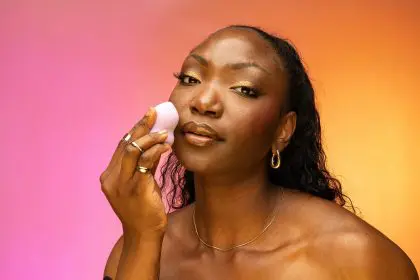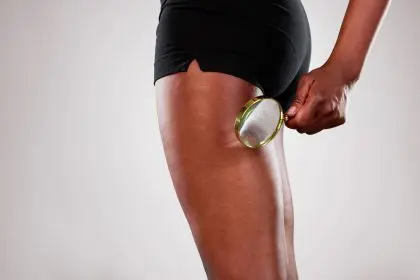Stretch marks affect millions of people, appearing most commonly on the stomach during pregnancy, growth spurts, or significant weight changes. While these skin changes are natural and harmless, they can affect self-confidence. Understanding available treatments and prevention strategies can help in managing these common skin concerns effectively.
Understanding the science behind stretch marks
Stretch marks, medically known as striae, develop when skin stretches rapidly beyond its natural elasticity. This stretching disrupts collagen and elastin fibers in the skin, creating visible lines beneath the surface. Fresh stretch marks typically appear reddish, purple, or pink, eventually fading to a lighter tone over time. While stretch marks can’t be completely erased, their visibility can be significantly reduced with the right approach.
Topical treatments
A consistent skincare routine using targeted products can make a noticeable difference in the texture and appearance of stretch marks. Retinoid creams, derived from vitamin A, help rebuild collagen and improve skin elasticity. Prescription-strength products, such as tretinoin, are especially effective for newer stretch marks.
Moisturizers containing hyaluronic acid play a crucial role in treatment. This ingredient is known for its deep hydration properties, helping the skin maintain its elasticity and fade marks over time. Natural oils, including cocoa butter, shea butter, and coconut oil, can nourish and hydrate the skin, improving its overall appearance.
Professional treatments
For more pronounced stretch marks, several clinical treatments offer advanced solutions. Fractional lasers target the deeper layers of skin, stimulating collagen production and reducing discoloration. Pulsed dye lasers work particularly well for red or purple stretch marks, helping reduce redness and improve skin texture. These laser therapies typically require multiple sessions for optimal results and should be performed under the supervision of a licensed dermatologist.
Microneedling presents another effective option, especially for stretch marks that have become white or silvery. This treatment involves using fine needles to create tiny punctures in the skin, promoting natural healing processes and boosting collagen production. Chemical peels offer yet another approach, using solutions containing salicylic acid or trichloroacetic acid (TCA) to exfoliate and remove the top layer of skin, encouraging new skin growth.
Daily care and massage techniques
Regular exfoliation helps promote cell turnover and reduce the appearance of stretch marks. Using gentle, circular motions with a scrub containing natural ingredients like sugar or coffee grounds can enhance results. Products containing glycolic acid provide chemical exfoliation, promoting smoother and more even skin texture.
Massage techniques play a vital role in treatment success. Using firm but gentle motions with a moisturizing cream or oil helps improve circulation and enhance the absorption of topical treatments. This approach should focus specifically on stretch-marked areas for best results.
The role of nutrition and hydration
A balanced diet and proper hydration support skin health from the inside out. Collagen-rich foods like bone broth and fish help boost the body’s natural collagen production. Foods high in vitamins C and E provide essential antioxidants that help repair skin damage and maintain elasticity. Adequate water intake keeps skin supple, which can help prevent the formation of new stretch marks.
Exercise and weight management
Regular exercise helps maintain stable weight and prevents excessive skin stretching. Incorporating strength training and yoga can improve muscle tone, which provides better support for the skin. This physical activity, combined with proper nutrition, creates a foundation for healthier skin.
Prevention strategies
Preventing new stretch marks requires a proactive approach. Daily moisturizing with products containing hyaluronic acid or vitamin E helps maintain skin elasticity. During periods of expected body changes, such as pregnancy, wearing supportive garments like belly bands can help reduce skin strain. Gradual weight changes, rather than rapid gains or losses, help minimize the risk of new stretch marks forming.
Professional guidance and support
When stretch marks cause significant concern or if over-the-counter treatments prove ineffective, consulting a dermatologist can provide valuable direction. These professionals can recommend advanced procedures tailored to individual skin types and stretch mark severity, creating comprehensive treatment plans for optimal results.
Embracing natural skin changes
While pursuing treatment options, it’s essential to maintain perspective about stretch marks. These marks tell a story of growth, resilience, and change. Building confidence comes from both taking active steps to improve skin appearance and accepting that some changes are part of life’s natural journey.
By following a comprehensive treatment approach and seeking professional guidance when needed, individuals can effectively reduce the appearance of stretch marks while maintaining realistic expectations about results. With consistent care and appropriate treatment selection, many people successfully improve the appearance of their stomach stretch marks and regain confidence in their skin.
This story was created using AI technology.















